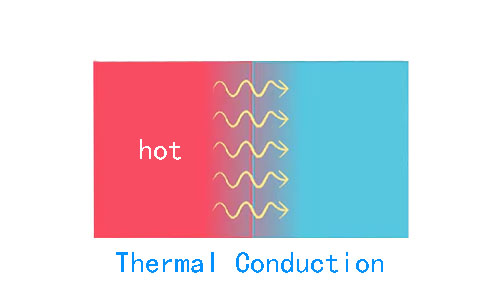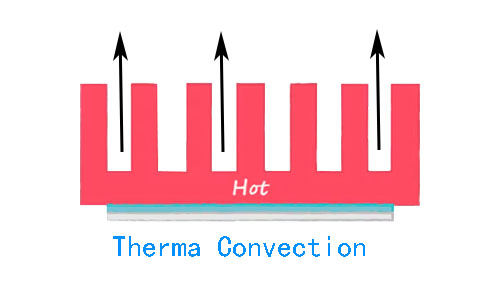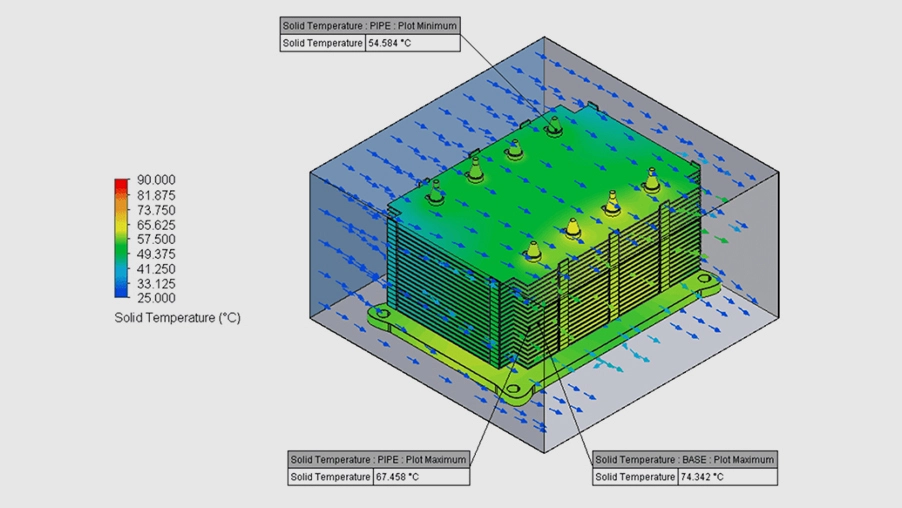Thermal management is the process of regulating and controlling the temperature or temperature difference of the object by using heating or cooling means according to its requirements. Thermal management can be found everywhere in everyday life, such as in cell phones, computers, cars, rooms, to various industrial applications. It covers a wide range of applications, from electronic devices to automotive, aerospace, energy, and many other industries, and plays a key role in ensuring system performance, reliability, and safety.
Principles of Thermal Management
The basic principles of thermal management are heat conduction, convection and radiation. These three types of heat transfer are heat type high temperature objects absorb high and low temperature invincible transfer process.Temperature and temperature difference are important parameters of these three heat transfer methods.

Thermal Conduction
Heat is transferred through direct contact between two objects, the colder object naturally draws energy from the hotter object. Generally, the smallest surface area transfers the greatest amount of energy.

Thermal Convection
The transfer of heat through the movement of a fluid (air or liquid). When a colder fluid flows through a hotter object, it absorbs heat from the object and carries it away. This can be accomplished by natural air convection or fan-forced air convection.

Thermal Radiation
Thermal radiation is the transfer of heat in the form of electromagnetic waves. In principle, radiation transfers heat by means of electromagnetic waves generated when hot particles vibrate. This method is usually only applicable to vacuum applications.
Methods and techniques of thermal management
Thermal management involves not only the design of the thermal management system, but also the selection of materials and layout optimization.
Heat Sinks
A heat sink is a common thermal management component, usually made of metal with a large surface area. It improves heat dissipation efficiency by increasing the contact area with air. Heat sinks are widely used in electronic devices, computer hardware, and other applications.
Fans
Fans are used to create forced convection, accelerating the flow of air to carry away heat. Heat sinks are usually used in combination with fans to transfer heat from the heat source to the air.
Heat Pipe
Heat pipes are highly efficient heat transfer devices that utilize the evaporation and condensation of a working fluid to transfer heat. Heat pipes have high thermal conductivity, allowing for efficient heat transfer in smaller spaces.
Liquid Cooling
Liquid cooling systems use liquids (e.g., water, coolant, etc.) as the heat transfer medium. Liquids have a higher specific heat capacity and can absorb more heat, so they are widely used in some high-performance computing and industrial applications.
Phase Change Materials and Thermal Interface Materials (TIM)
Phase change materials are characterized by simple structure, small mass, large latent heat, and smooth temperature during heat absorption and exothermic process; thermal interface materials are substances used to fill or coat between two heat exchange surfaces (e.g., thermally conductive paste, thermally conductive silicone, thermally conductive pads, etc.), which can reduce the contact thermal resistance and enhance the efficiency of thermal conduction, thus effectively transferring heat and lowering the temperature of the equipment.

As technology continues to advance, the future of thermal management will move in the direction of greater efficiency, intelligence and green. Integrated design, development of efficient materials, intelligent control and environmental requirements will become core competencies in the thermal management field, and Lori will enhance our thermal management capabilities through the development of new materials and technological advances so that our thermal management solutions not only provide better temperature control, but also improve energy efficiency, reduce environmental impact, and promote sustainable development in all industries.









